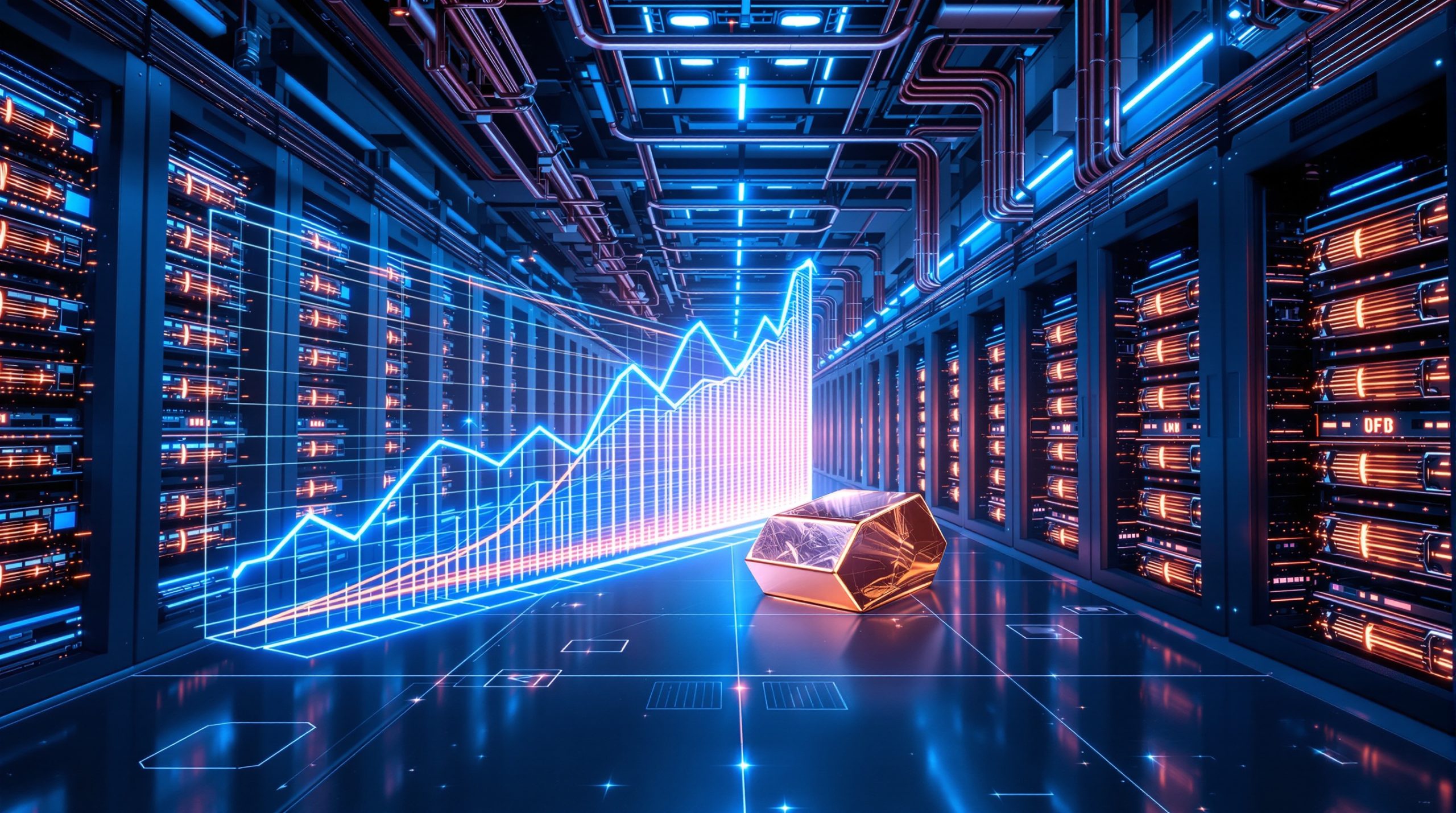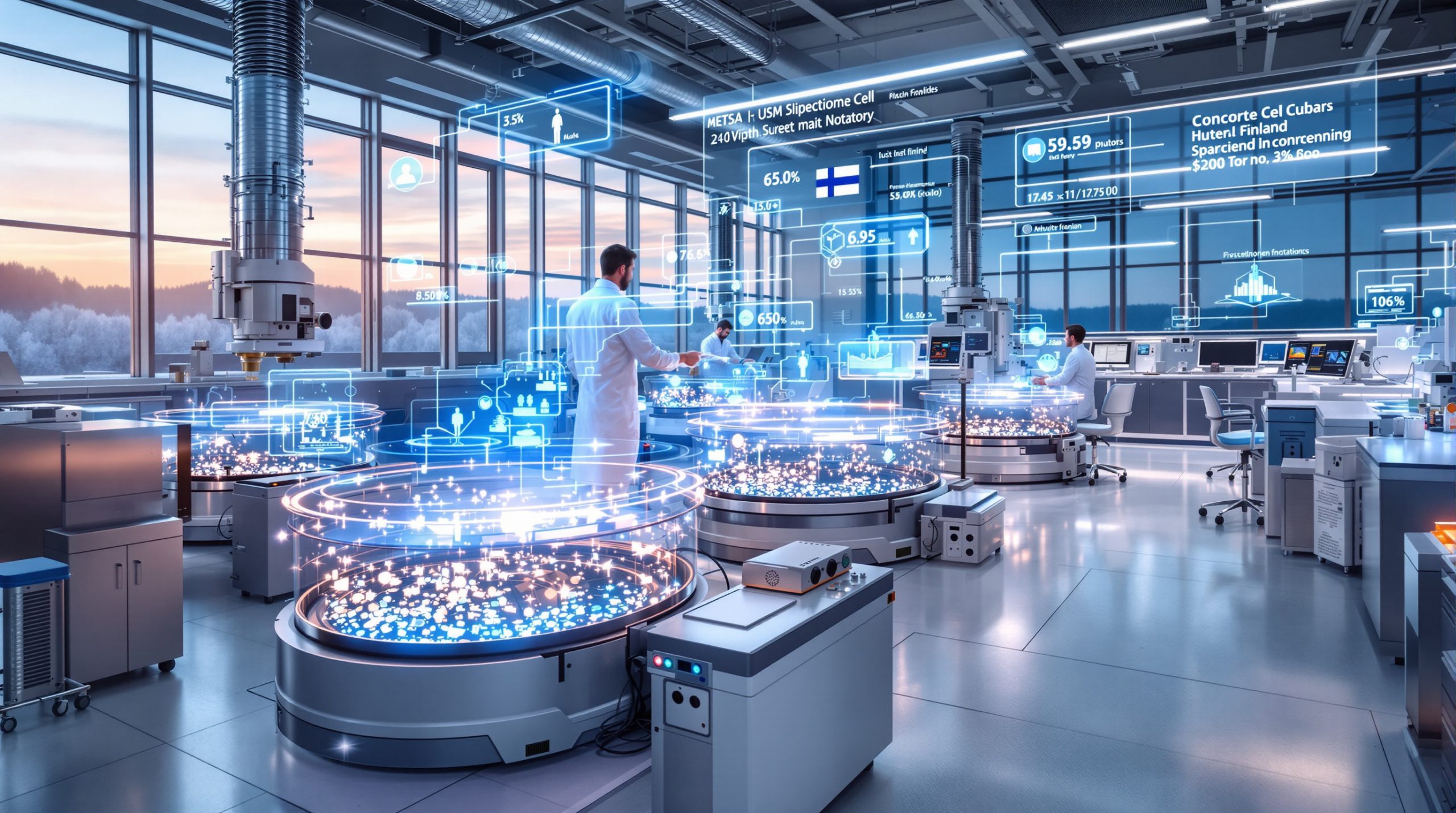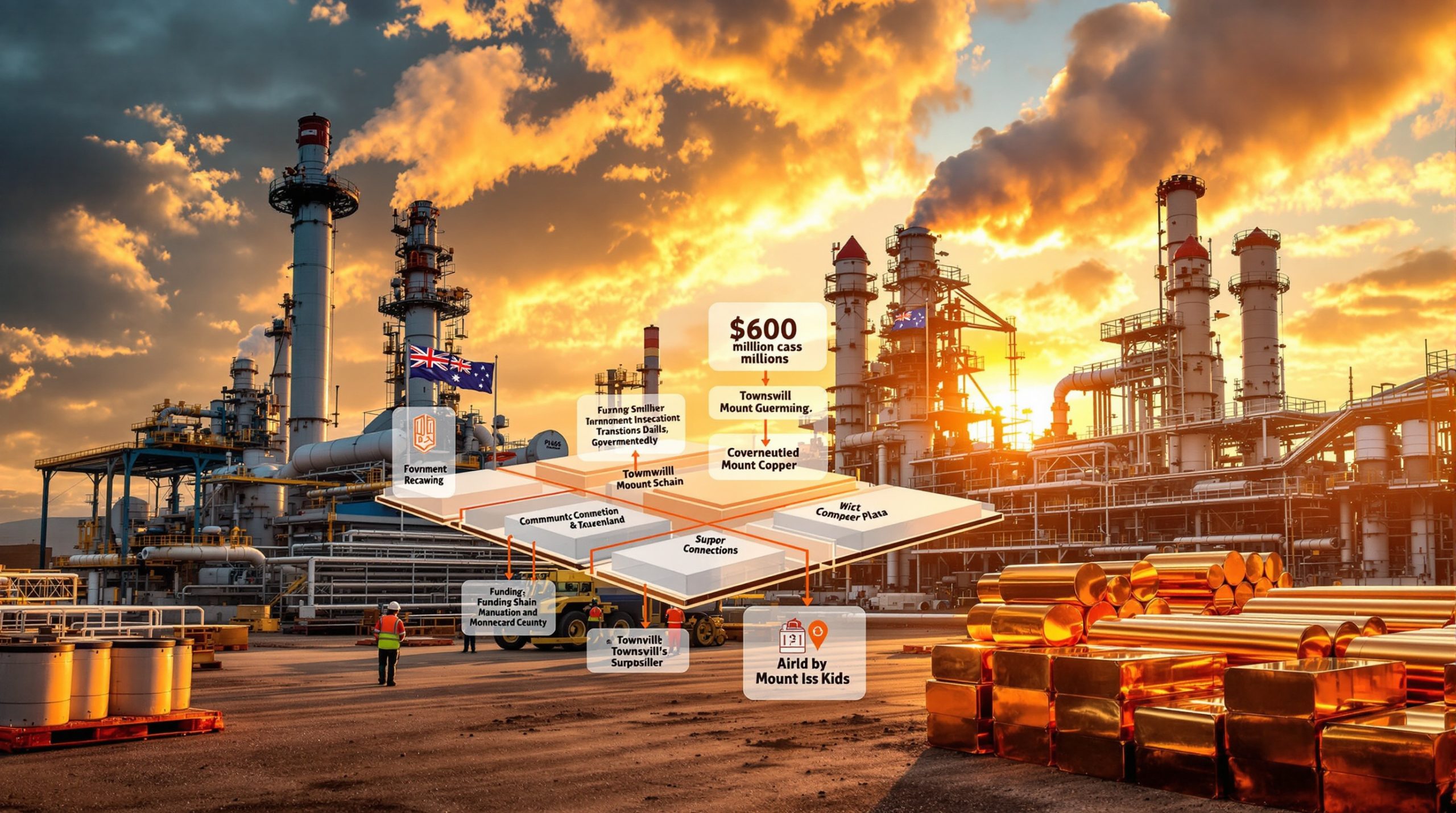How AI Data Centers Are Transforming Copper Requirements
The expansion of artificial intelligence infrastructure is creating unprecedented demand for copper, a critical metal essential to the electrification economy. Unlike traditional computing facilities, AI data centers consume substantially more power, generate greater heat loads, and require more extensive connectivity—all driving significant increases in copper usage per facility.
This emerging trend represents a new and rapidly accelerating source of copper demand that extends beyond traditional applications in construction and manufacturing. The shift is fundamentally reshaping market dynamics and creating fresh investment opportunities throughout the copper supply chain.
According to analysis from Goldman Sachs, AI-related data center growth could add over 1 million tonnes of copper demand from AI data centers annually by 2030, highlighting the scale of this emerging consumption category.
Why Does AI Technology Require More Copper Than Traditional Computing?
Power-Intensive Infrastructure Requirements
AI systems, particularly large language models and advanced neural networks, require substantially more power than conventional computing operations. A typical AI server consumes 4-6 times more electricity than standard servers, necessitating:
- Heavier-gauge copper busbars and cabling for power distribution
- More robust power distribution units with enhanced copper components
- Uninterruptible power supplies containing 30-40% more copper than standard units
- Redundant power systems with additional copper infrastructure for reliability
The power infrastructure alone in AI data centers can incorporate hundreds of tons of copper per facility, with power distribution systems accounting for approximately 35-45% of total copper usage in these specialized installations.
Advanced Thermal Management Systems
The computational intensity of AI workloads generates significant heat that must be managed through sophisticated cooling systems:
| Cooling Component | Copper Content | Function |
|---|---|---|
| Cold plates | High | Direct contact cooling for processors |
| Liquid cooling tubes | Moderate-High | Thermal transfer pathways |
| Heat exchangers | Very High | Efficient heat dissipation |
| Cooling towers | Moderate | External heat rejection |
Cooling infrastructure represents approximately 40% of copper usage in AI data centers, compared to only 15-20% in traditional facilities. This substantial difference stems from AI's need for precision cooling at much higher power densities.
Enhanced Connectivity Requirements
AI data centers require extensive high-bandwidth networking infrastructure to handle the massive data flows associated with training and running sophisticated models:
- Each facility contains an estimated 30-50 miles of copper wiring
- High-performance computing clusters demand advanced copper-rich cabling (Category 8, InfiniBand)
- Interconnect density between AI servers is substantially higher than in traditional computing environments
- Redundant network paths add additional copper requirements
What Volume of Copper Will AI Data Centers Consume?
Current and Projected Consumption Metrics
The scale of copper demand from AI infrastructure development is substantial and growing rapidly:
- Annual copper demand from AI data centers is projected to reach approximately 400,000 metric tons annually over the next decade
- Peak demand is expected around 2028, potentially reaching 572,000 tons
- Cumulative copper use in data centers may exceed 4.3 million tons by 2035
- By 2030, AI data centers could represent 2-3% of global copper demand
These projections highlight the emergence of AI infrastructure as a major new consumption category for copper, adding pressure to an already tight supply market.
Capital Expenditure Implications
Copper represents a significant portion of data center construction costs:
- Up to 6% of a data center's capital expenditure is attributed to copper components
- Large-scale facilities can use thousands of tons of copper in their construction
- The industry average shows about 27 tons of copper used per megawatt of AI data center capacity
- This represents a substantial increase over traditional data centers, which typically use 10-15 tons per megawatt
How Does AI-Driven Demand Impact the Global Copper Market?
Supply-Demand Imbalance Concerns
The surge in AI infrastructure development is occurring within an already constrained copper market:
- Global copper supply faces potential shortfalls of up to 6 million tons by 2035
- New mine development timelines typically span 7-10 years from discovery to production
- Recent production disruptions in major copper-producing countries like Chile and Panama have further tightened supply
- Grade decline in existing mines is reducing output from traditional sources
This combination of rising demand and limited supply flexibility creates the conditions for sustained market tightness in the copper sector.
Compounding Demand Factors
AI data centers represent just one of several major growth drivers for copper demand from AI data centers:
- Renewable energy infrastructure (solar, wind) requires 2-5 times more copper than traditional power generation
- Electric vehicle production uses 3-4 times more copper than internal combustion vehicles
- Power transmission grid upgrades for electrification add further demand pressure
- These combined factors could nearly double copper demand in certain sectors by 2035
Industry analysts note that this convergence of demand drivers is transforming copper from a cyclical industrial metal to a structural growth commodity, fundamentally changing how investors should view the metal's prospects.
How Can Investors Gain Exposure to the Copper-AI Connection?
Major Mining Companies
Several established mining companies offer significant copper exposure:
-
BHP Group (ASX: BHP) operates Escondida in Chile, the world's largest copper mine, alongside Olympic Dam and Spence projects that provide long-life, low-cost production. BHP's scale and balance sheet provide leverage to rising copper price predictions while cushioning against short-term volatility.
-
Sandfire Resources (ASX: SFR) offers more focused copper exposure through its MATSA complex in Spain and Motheo mine in Botswana. The company is well-positioned to benefit from higher copper prices as it continues to ramp up output and improve cash flow generation.
-
Evolution Mining (ASX: EVN) provides diversified exposure with meaningful copper production through Ernest Henry and Northparkes operations in Australia. The company expects copper production of 70,000-80,000 tonnes by FY26, offering a natural hedge against gold price swings through gold-copper exploration.
Diversified Investment Approaches
For investors seeking broader exposure to the copper theme:
- ETFs like the Global X Copper Miners ETF (ASX: WIRE) provide access to a global basket of copper producers, with this particular fund gaining more than 40% over the past 12 months
- Diversified miners with significant copper operations offer balanced exposure with reduced single-commodity risk
- Copper futures and options markets provide more direct price exposure for sophisticated investors
Furthermore, understanding various copper investment strategies can help investors navigate this evolving market effectively.
What Are the Long-Term Implications for Copper Markets?
Structural Market Transformation
Copper's role is evolving from a cyclical industrial metal to a structural growth commodity:
- Historical price patterns were closely tied to economic cycles and construction activity
- New demand drivers (AI, EVs, renewables) create more persistent, less cyclical demand patterns
- Supply constraints and lengthy development timelines suggest sustained market tightness
- The combination may support higher average prices over longer periods than historically observed
Industry experts note that this fundamental shift in copper's market positioning could transform investment approaches to the metal, potentially supporting higher valuation multiples for producers.
Critical Resource Status
Copper's importance to the global energy transition and digital infrastructure is elevating its strategic significance:
- Nations are increasingly viewing copper as a critical mineral for economic security
- Supply chain resilience concerns are driving interest in domestic production and processing
- Recycling initiatives are expanding to capture more secondary copper from existing sources
- New extraction technologies are being developed to access lower-grade or more complex deposits
However, geopolitical factors like US tariffs impact on copper can introduce volatility to the market despite strong fundamentals.
FAQ: Copper and the AI Revolution
How much more copper does an AI data center use compared to a traditional facility?
AI data centers typically use 2.5-3 times more copper per square foot than traditional data centers due to higher power requirements, advanced cooling systems, and denser connectivity infrastructure. A traditional data center might use 10-15 tons of copper per megawatt of capacity, while AI facilities often require 25-30 tons per megawatt.
Will copper shortages limit AI infrastructure growth?
While copper supply constraints could potentially impact construction timelines and costs for AI infrastructure, they are unlikely to halt development entirely. Rather, copper scarcity may drive innovation in design efficiency, alternative materials for non-critical applications, and accelerated recycling programs. Major technology companies are also increasingly securing supply chains through direct investment in copper production.
How does copper recycling factor into the AI data center equation?
Copper's recyclability is a significant advantage, with recycled copper maintaining virtually identical properties to newly mined material. As AI infrastructure expands, the industry is implementing more sophisticated end-of-life recovery programs to capture and reuse copper components from decommissioned equipment. This circular approach may help mitigate some supply pressures in the medium to long term.
Conclusion: Copper's Expanding Role in the Digital Economy
The intersection of artificial intelligence and copper demand represents a significant shift in how we understand this essential industrial metal. As data centers evolve to support increasingly sophisticated AI workloads, their copper intensity is rising dramatically, creating a new and substantial demand category that complements existing growth drivers in electrification and renewable energy.
For investors, this trend offers multiple pathways to potential exposure—from established miners to specialized ETFs—while highlighting the strategic importance of copper in the global technology ecosystem. As AI continues its rapid advancement, copper's role as the conductive foundation of our digital infrastructure only grows more essential.
In addition, the surging copper demand from multiple sectors suggests that this metal will remain a critical component of the global economy for decades to come, making it a potentially valuable long-term investment consideration.
Want to Spot the Next Major Copper Discovery?
Stay ahead of the market with real-time alerts on significant ASX copper discoveries, powered by Discovery Alert's proprietary Discovery IQ model. Visit our discoveries page to see how early identification of major mineral finds can transform investment returns, and begin your 30-day free trial today.




